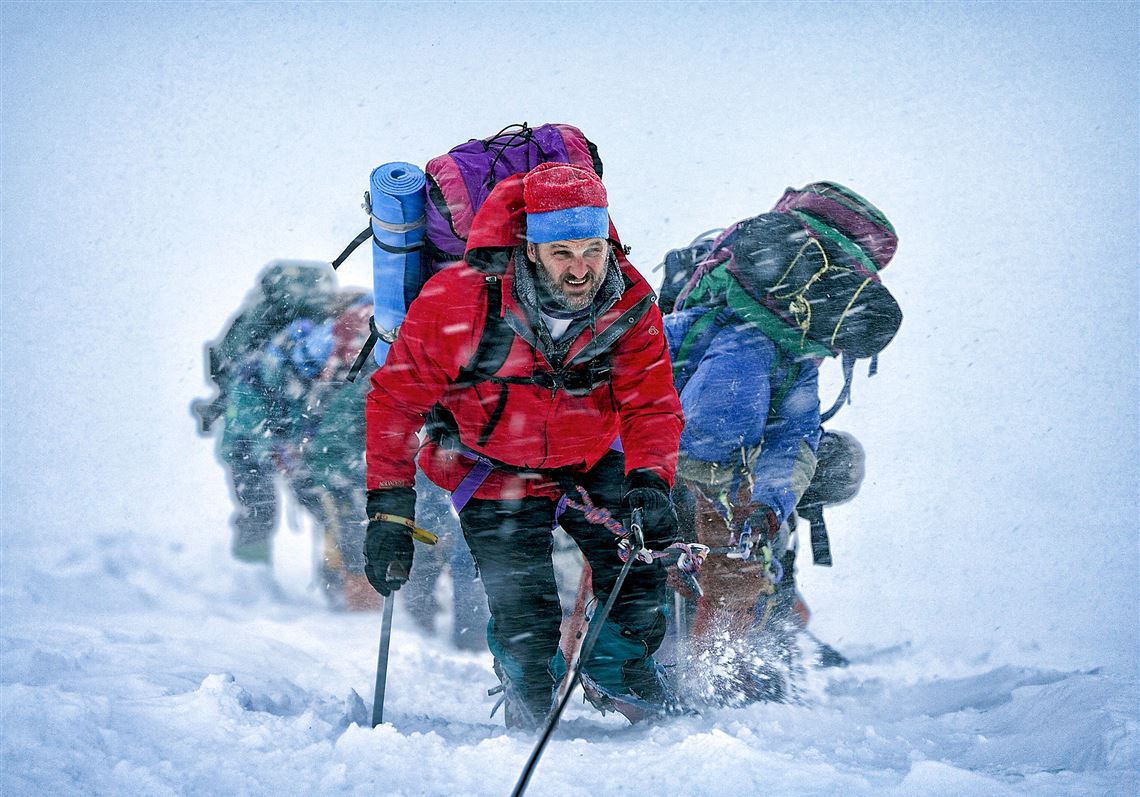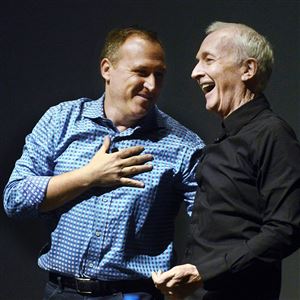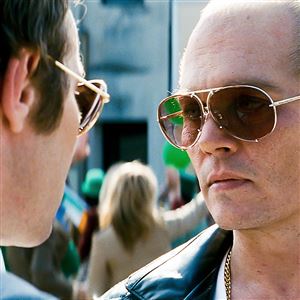On one hand, you can understand the allure. On the other hand, the suicidal masochism is hard to fathom: On May 10, 1996, climbers from two expeditions (not competing but not wholly cooperating either) set out for their final ascent to Mount Everest, the highest point on Earth — at 29,029 feet, the comfortable cruising level of a 747 jet.
It strikes me as much like the biblical Tower of Babel: Mankind’s arrogant audacity is a kind of dangerous affront to God. These humans are just asking for trouble.
They’re going to get it, and we’re going to see it, in “Everest,” the spectacular new IMAX 3-D true-life adventure film.
Starring: Jason Clarke, Josh Brolin, Emily Watson, Jake Gyllenhaal, Keira Knightley.
Rating: PG-13 for intense peril and disturbing images.
“It’s not the altitude, it’s the attitude,” says a veteran guide before departure.
Yeah, well, in fact, it’s both.
New Zealand’s safety-conscious expedition leader Rob Hall (Jason Clarke) is in charge, backed up by base-camp coordinator Helen Wilton (Emily Watson). Cocky Texas climber Beck Weathers (Josh Brolin) is their star client. Mailman Doug Hansen (John Hawkes), who failed to summit the previous year, is grateful for the discount he’s been given — from $65,000 — this year.
Mountain climbing is tough on domestic relationships. “I think he’s scared,” says Beck’s worried wife (Robin Wright) back in Dallas. Rob’s wife (Keira Knightley) just wants her husband to come back in time for the birth of their child. Another climber, asked how his wife is coping, replies, “She’s fine with it, ever since we got divorced.”
Seattle-based guide Scott Fischer (Jake Gyllenhaal), a hard-drinking slacker, has issues of his own, including competition for clients and publicity.
As if oxygen deprivation, killer crevices and avalanches weren’t enough, there’s the added fact that Everest’s glaciers are constantly melting and moving, especially under daytime sunlight, sending giant blocks of ice the size of office buildings down below.
What goes up — and who goes up — must come down. The descent is much more treacherous than the ascent. A sudden violent storm engulfs the climbers in an epic struggle to survive.
Based on several books about the events, including Mr. Weathers’ “Left for Dead” and Jon Krakauer's “Into Thin Air,” with a few scenes borrowed from the 1998 IMAX short also titled “Everest,” Icelandic director Baltasar Kormakur’s fluid action and Salvatore Totino’s grand 3-D photography on location in Nepal (melded with “cheating” footage in the Italian Alps) combine craftsmanship and narrative momentum to render an amazing ascension to an amazing, heavenly hellish place. Shots of Kathmandu and glimpses of Nepalese high-altitude life and monasteries in the clouds are breathtaking. Culmination is the intense hurricane-scale storm, whose 80 mph winds and minus-40 degree temperatures spell heroic survival as well as doom for the protagonists.
Trouble is, those climber-protagonists inevitably get short shrift. (And their Sherpa guides get even shorter shrift.) In many ways, it’s an old-fashioned disaster movie with a gallery of characters, some of whom are destined not to make it. Fusing three or four of them into composites might’ve made for clearer storytelling, but Mr. Kormakur sticks admirably close to the facts and to a crisp two-hour running time. Except for a few farewell phone calls, he makes no melodramatic molehill out of this mountain.
In the tragic end, the captains go down with the mountainous ship, and it was the worst Everest disaster to that date. The terrible irony: As this film was being shot in Nepal, an April 18, 2014, Everest avalanche killed 16 — far worse than the 1996 disaster at hand.
Mr. Brolin, who looks a lot like Nick Nolte these days, does well enough. More important, it turns out, is the role of Rob Hall — the first non-Sherpa to summit Everest five times. Christian Bale was to play him originally but left the project in order to do “Exodus: Gods and Kings” — thank God and kings alike! Mr. Clarke, his replacement, provides a beautiful character study, rather than a “star turn.”
There are no big revelations as to the “why” of mountain mania, beyond the “because it’s there” cliche. The camaraderie, the danger, the exhilaration at the top, the glory. We already know about all that. In Mr. Weathers’ case, it’s an antidote to depression. “You suffer terribly for a few days, and then for the rest of your life, you’re ‘a guy who climbed Everest.’”
They won’t be renaming it “Mount Chomolungma” — the Tibetans’ term — any time soon. George Everest, the mid-19th-century surveyor general of India, still has a pretty firm grip on the moniker.
This “Everest” has an oddly distanced, un-Hollywood quality about it and fewer edge-of-your-seat thrills than audiences might want. That’s what I like about it.
It’s not nice to fool Mother Nature. She’s not a bit nice when she fools you back.
Post-Gazette film critic emeritus Barry Paris: parispg48@aol.com.
First Published: September 18, 2015, 4:00 a.m.

















